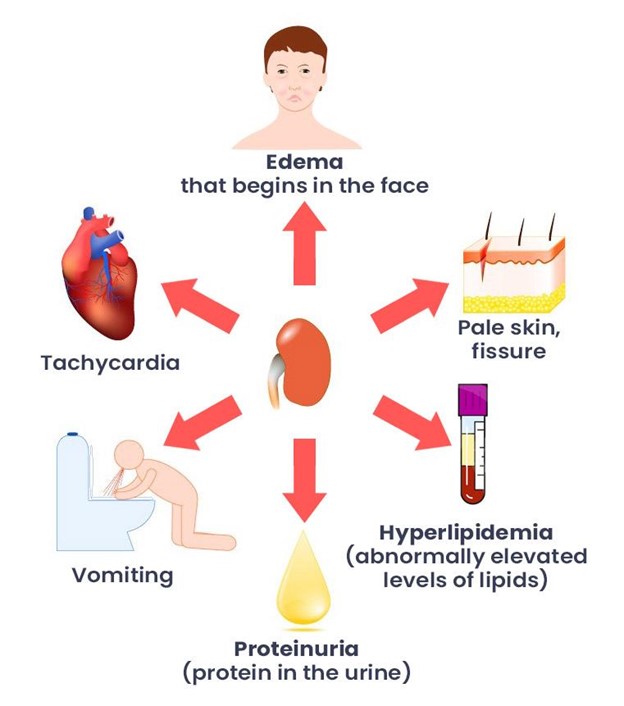We become concerned about the presence of Spinal Bifida when we note
The Correct Answer is {"dropdown-group-1":"D"}
Pilonidal dimpling with the presence of an abnormal tuft of hair in or near the dimple
Explanation:
Spina bifida is a congenital condition where there is incomplete closing of the backbone and membranes around the spinal cord during early development in the womb. Pilonidal dimpling with the presence of an abnormal tuft of hair in or near the dimple is a specific sign of spina bifida. This condition is called "sacral dimple," and it can indicate an underlying issue with the spinal cord and nerves. An abnormal tuft of hair in or near the dimple suggests a neural tube defect, which is characteristic of spina bifida.
Why the other choices are incorrect:
A. complete paralysis:
Complete paralysis is a severe neurological symptom but it is not specific to spina bifida. It can occur due to various other conditions as well, such as spinal cord injuries, infections, and neurological disorders. It's not a characteristic sign of spina bifida.
B. Petechiae:
Petechiae are small, red or purple spots on the skin that are caused by bleeding under the skin. They are usually associated with bleeding disorders, infections, or other medical conditions. Petechiae are not a characteristic sign of spina bifida.
C. Abnormal Vital Signs:
While spina bifida can potentially lead to neurological complications that might influence vital signs, the presence of abnormal vital signs is a non-specific symptom. Abnormal vital signs could be caused by a wide range of medical conditions, and they are not directly indicative of spina bifida.

Nursing Test Bank
Naxlex Comprehensive Predictor Exams
Related Questions
Correct Answer is B
Explanation
A. Can always track an object with eyes:
The ability to track an object with the eyes typically develops in infants around 2 to 3 months of age. This developmental milestone is not specific to cerebral palsy and is generally expected in healthy infants.
B. Needs support with pillow props for sitting
Explanation:
Cerebral palsy (CP) is a group of permanent movement disorders that appear in early childhood. It is caused by abnormal development or damage to the parts of the brain that control movement, balance, and posture. The symptoms of cerebral palsy can vary widely, but they are generally related to motor function and coordination.
The manifestation of needing support with pillow props for sitting is consistent with the motor impairments often seen in cerebral palsy. Children with cerebral palsy may have difficulties with muscle control and coordination, which can affect their ability to sit independently. The need for external support to maintain a sitting position is indicative of motor developmental delays or challenges associated with cerebral palsy.
C. Uses a pincer grasp to pick up a toy:
The pincer grasp, where a child uses the thumb and index finger to pick up small objects, usually develops around 9 to 12 months of age. This developmental milestone is not directly associated with cerebral palsy and is part of normal infant development.
D. Smiles when a parent appears:
Smiling in response to familiar faces, including parents, is a social and emotional developmental milestone that typically occurs around 2 to 3 months of age. While cerebral palsy can affect motor function, it does not directly impact an infant's ability to express emotions like smiling.
Correct Answer is C
Explanation
A) Smokey brown urine:
This finding is not typically associated with nephrotic syndrome. Smokey brown urine might indicate the presence of blood in the urine, which can be seen in conditions such as hematuria or certain kidney infections.
B) Polyuria:
Polyuria refers to excessive urination and is not a primary characteristic of nephrotic syndrome. However, children with nephrotic syndrome may have decreased urine output due to the loss of fluid and proteins through the damaged kidney filters.
C) Facial edema:
Facial edema (swelling of the face) is a hallmark of nephrotic syndrome. The loss of albumin in the urine results in a decrease in oncotic pressure (a force that helps keep fluid in the blood vessels), leading to fluid accumulation in the interstitial spaces, including the face, ankles, and abdomen.
D) Hypertension:
Hypertension (high blood pressure) is not a typical finding of nephrotic syndrome itself. However, it's possible for kidney damage to lead to secondary hypertension. In nephrotic syndrome, low levels of albumin can trigger the renin-angiotensin-aldosterone system, which can contribute to increased blood pressure.

Whether you are a student looking to ace your exams or a practicing nurse seeking to enhance your expertise , our nursing education contents will empower you with the confidence and competence to make a difference in the lives of patients and become a respected leader in the healthcare field.
Visit Naxlex, invest in your future and unlock endless possibilities with our unparalleled nursing education contents today
Report Wrong Answer on the Current Question
Do you disagree with the answer? If yes, what is your expected answer? Explain.
Kindly be descriptive with the issue you are facing.
